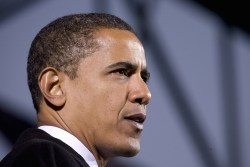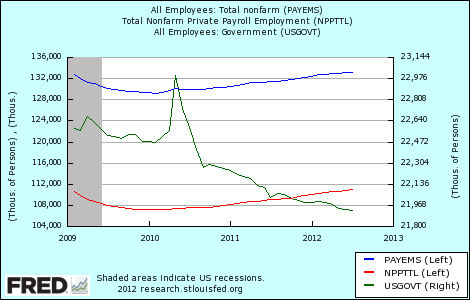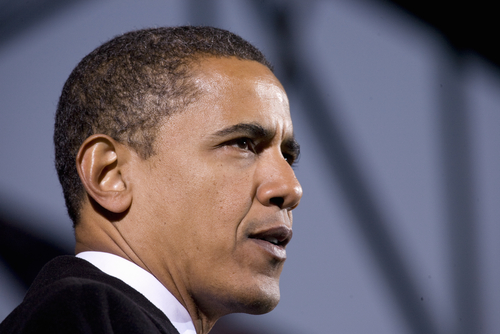
Photo by Shutterstock.
As he stepped to the mic last night, President Obama knew something that only a handful of other people in the country knew: the Bureau of Labor Statistics’ (BLS) estimate of the number of new jobs created in August. Pundits looked for any sign that might indicate what those numbers would be; a wild swing in either direction can greatly influence the markets.
Now we all know them. In August, the country added an estimated 96,000 jobs, lower than the 130,000 expected by analysts. The unemployment rate dropped to 8.1 percent — but as the Post‘s Neil Irwin points out, that’s largely because hundreds of thousands of people stopped looking for work. (The smaller the total pool of people working and people seeking jobs, the higher the percentage that is people working.)
And it gets worse: June’s BLS estimate was revised from 64,000 to 45,000; July’s from 163,000 to 141,000. Combine those drops with the fact that 9,000 of the “new” jobs were actually because of the resolution of a labor lock-out in New York, and the total gain in new jobs is only 46,000.
How the numbers break down.
- The ongoing decline in government sector layoffs seems to have flattened. All 96,000 jobs added were in the private sector, with no real decline in public.

Jobs figures by month during President Obama’s term. This doesn’t include this morning’s data. The blue line is total employment; red, private sector; green, public (pegged to right axis).
- Sectors that saw growth: health care, up 17,000; professional and technical services, up 27,000; food service, up 28,000; finance, 11,0000.
- Sectors that declined: manufacturing, down 15,000; motor vehicles and parts, down 8,000.
- The oil and gas industry has added only 3,800 jobs in three months. Again, green jobs are not tracked as a category by the BLS. Job cuts at wind turbine manufacturers, for example, come out of manufacturing.
- The unemployment rate for subsections of the population (men, women, African-Americans, etc.) was basically steady.
- The participation rate, the percentage of the population working or seeking work, fell to its lowest point since 1981. The participation rate for men, 69.8 percent, is the lowest ever recorded.
There’s a massive caveat to all of this. As those June and July revisions suggest, these data are very preliminary.
Last night, President Obama urged patience, suggesting that he would need more time to fix the economy. His speech was sober, not celebratory. This morning’s news may help explain why.


